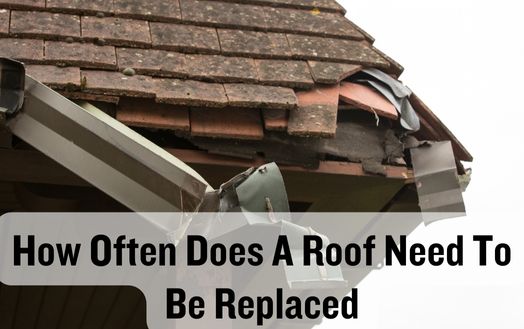
As the saying goes, ‘out of sight, out of mind.’ This applies to our roofs, which we often neglect until they break. How often does a roof need to be replaced? Our answer may be complicated due to several factors.
This discussion will cover the average lifespan of different roofing materials, signs that a roof needs replacing, the importance of regular roof inspections, and how weather affects roof longevity. You’ll understand the topic and be able to protect one of your most valuable assets by the end.
There are several major factors that affect the lifespan of a roof. To prolong your roof’s life, innovative audiences seeking roof replacement and maintenance must understand these factors.
Roof material comes first. Roof materials vary in lifespan. Asphalt shingles last 20–25 years, while metal roofs can last 50 years or more. Using high-quality materials can extend the life of your roof and reduce replacements.
Proper installation is essential. Poor roof installation increases damage and aging. Hire professional roofing contractors who follow best practices. This will prolong your roof’s life and reduce costly repairs.
Roofs need regular maintenance to last longer. Routine inspections, debris cleanup, and prompt resolution of minor issues can prevent major issues. Maintaining your roof regularly can also help you spot problems early and extend its lifespan.
Environmental factors also affect roof longevity. Heavy rain, strong winds, and prolonged sunlight can damage your roof. Making sure your roof is designed and installed to withstand these conditions can extend its lifespan.
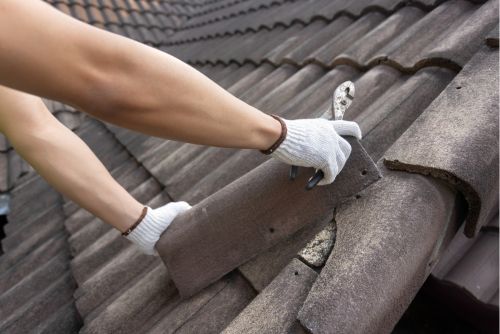
After learning about roof lifespan factors, it’s important to compare roofing material lifespans. The frequency of roof replacement depends on the roofing material. Here are four common roofing materials’ average lifespans:
For informed roof replacement decisions, homeowners must know the average lifespan of different roofing materials. Choose a durable roofing material to reduce roof replacements and protect your home.
Your roof may need replacement if it has extensive damage or deterioration. As an innovative homeowner, you know how important it is to recognize roof replacement signs. Recognition of these signs early can prevent further damage and prolong the life of your home.
Damage is one of the most obvious signs your roof needs replacing. Missing or damaged shingles, curling or buckling shingles, or roof sagging are examples. These signs mean your roof needs replacing to protect your home from the elements.
Also, watch for water damage. Water stains on ceilings or walls may indicate a leaking roof. Bad roof valleys, worn flashing, or cracked shingles may be to blame. Ignoring these signs could cause mold, structural damage, and costly repairs. Replace the roof right away to address these problems.
Replacement is also recommended for roofs over 20 years old. Most roofs last 20–25 years, even without damage. You can avoid leaks and major issues by replacing your roof now.
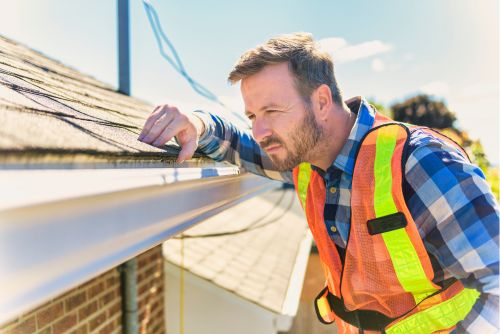
Maintaining roof integrity and longevity requires regular inspections. To avoid premature roof replacements, innovative homeowners must understand the importance of regular roof inspections. Regular roof inspections are necessary for four reasons:
As an innovative homeowner, I’ve learned that weather can greatly affect my roof’s longevity. A roof’s lifespan and replacement depend on the weather. My roof wears down due to my climate, so understanding how weather affects roof longevity is crucial to making informed roof maintenance and replacement decisions.
The weather affects roofing materials differently. Heat and cold can warp and crack shingles, while extreme cold can make them brittle and vulnerable. High winds can lift and dislodge shingles, exposing the structure to more damage. Leaks and water damage can result from improper roof sealing and maintenance during heavy rain and snow. Even long-term UV exposure can deteriorate roofing materials.
To prolong the life of my roof, I must choose the right materials for my climate. Some materials are better for certain weather conditions. Metal roofs are wind-, rain-, and snow-resistant. However, asphalt shingles are more weather-sensitive and may need to be replaced more often in harsh climates.
Regular inspections and maintenance help identify and resolve weather-related issues before they escalate. Being proactive and fixing problems quickly can extend the life of my roof and reduce the need for replacement. I can also prolong my roof by using high-quality materials and professional installation.
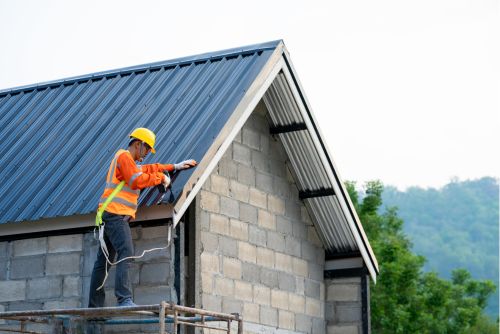
I prioritize roof inspections and maintenance to ensure its longevity. Proactive roof maintenance prevents problems and extends its lifespan. Here are four essential roof maintenance tips:
Weather is a major cause of roof damage. Understanding common roof damage causes is crucial to roof maintenance. Take precautions to protect your roof and avoid frequent replacements by knowing these factors.
Hail is a common roof damage cause. Hailstones vary in size and intensity and can damage your roof. Hail can cause roof cracks, dents, and punctures, which can lead to leaks and further damage if not repaired.
Strong winds frequently cause roof damage. High winds can lift and dislodge roofing materials, leaving gaps and letting water in. Strong winds can also drop trees or branches on your roof, causing significant damage that may require roof replacement.
Innovative solutions, like impact-resistant roofing materials, can reduce severe weather damage. These materials resist hail and strong winds, reducing the need for roof replacements.
Water seeping into your roof from heavy rainfall or snowfall can also cause roof damage, rot, and mold. Poor installation or maintenance can also cause roof issues and replacements.
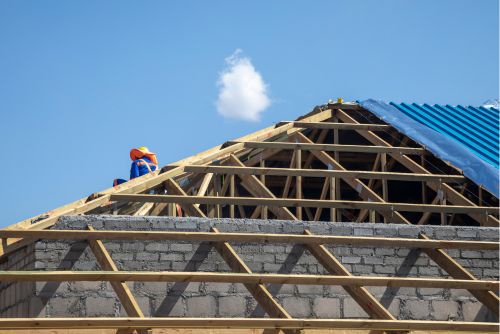
Roof durability depends on proper ventilation. A roof without proper ventilation can develop a variety of problems that require early replacement. Proper ventilation is crucial for roof longevity for four reasons:
After learning how ventilation affects roof longevity, it’s important to choose the right roofing material for your climate. Choosing the right roofing material can affect your roof’s lifespan and ability to withstand your climate.
Consider the local weather and climate when choosing a roofing material. Different roofing materials have strengths and properties that suit certain climates. In hot climates with intense sunlight, you may want a heat-resistant and UV-protected roofing material. In areas with heavy rain or snowfall, you may want to choose a durable material that can withstand moisture.
Maintenance needs for each roofing material should also be considered. Some materials require frequent inspections and repairs, while others are low-maintenance. Choose a roofing material that matches your maintenance needs.
In addition to climate and maintenance, roofing material aesthetics are important. The right roofing material can improve your home’s curb appeal.
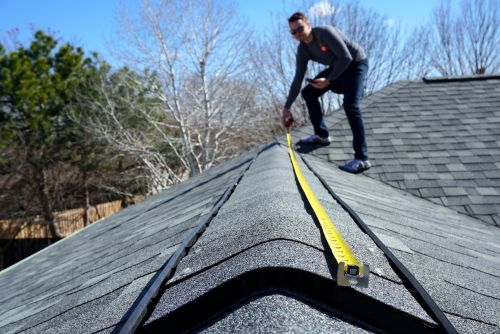
To fully understand your roof’s warranty coverage, read the manufacturer’s terms and conditions. This section clarifies roof replacement warranty coverage. Four important considerations:
Understanding your roof’s warranty and how often does a roof need to be replaced is important, but there are other factors to consider when choosing between DIY and professional roof replacement.
DIY roof replacement can be appealing to home improvement enthusiasts who want to save money. Before choosing, weigh the pros and cons. Cost savings are a major benefit of DIY roof replacement. You can save thousands by buying materials and doing the work yourself. DIY projects offer more customization and flexibility because you control the design and timeline.
The risks and challenges of DIY roof replacement must be acknowledged. It takes a lot of time and effort. Ladder climbing, carrying heavy materials, and working in different weather conditions are physically demanding. Without professional help, errors or improper installation could lead to costly repairs.
However, professional roof replacement has many benefits. Professionals have the skills, experience, and tools to do the job well. They know the latest roofing techniques and innovations, ensuring a high-quality, durable result. Hiring professionals gives you peace of mind because they usually offer warranties.
The choice between DIY and professional roof replacement depends on your skills, resources, and preferences. It’s important to assess your skills, project complexity, and risks and benefits. Whether you replace your roof yourself or hire professionals, the most important thing is doing it right to protect your home and investment.
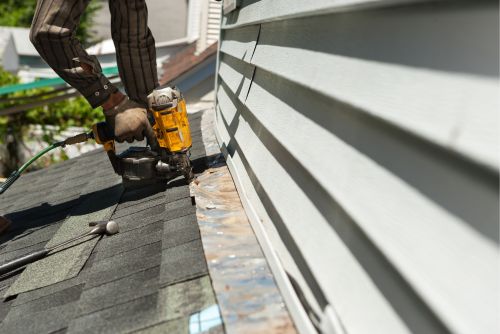
Understanding roof replacement costs is crucial. Roof replacement costs depend on several factors. Here are four important cost factors:
These cost factors can help you estimate roof replacement costs. Understanding the factors that affect cost can help you choose a roofing material and decide if repairs are needed.
Repairing your roof is essential to its longevity. Maintenance and repairs are necessary to keep your roof in good condition and last. Fixing roof leaks and inspecting them regularly can extend their lifespan and prevent costly replacements.
Regular maintenance is crucial to roof longevity. Clean debris from the roof and gutters, check for damage or wear, and seal the roof. Keep your roof clean and well-maintained to avoid water damage and mold growth, which can shorten its lifespan.
Repairs must be done quickly. Even a small roof leak can cause significant damage if ignored. To prevent roof and interior damage, find the leak and fix it immediately. Regular inspections can detect issues before they become major, allowing for timely repairs and roof longevity.
Innovative roofing technologies and materials can extend roof life. For instance, reflective coatings reduce UV rays and prevent premature deterioration. Advanced roofing systems are more durable and resistant to extreme weather, extending the life of your roof.
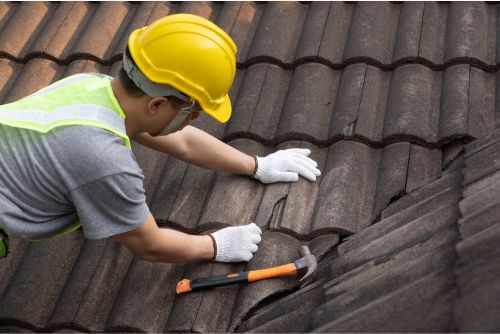
Regularly inspect your roof for visible damage or wear to spot early signs of deterioration. Early detection can prevent further damage and save you from replacing your roof. Identifying roof deterioration early involves four key signs:
Checking for roof deterioration prevents further damage and lets us consider the environmental impact of roof replacement. When deciding how often to replace a roof, consider its environmental impact.
Due to materials and waste, roof replacement can harm the environment. Asphalt shingles contribute to landfill waste and require a lot of energy to make. Additionally, transporting these materials to you increases their carbon footprint.
Innovative roofing solutions are addressing environmental concerns. Sustainable roofing materials like metal or clay tiles are recyclable and last longer. These materials reduce roof replacement frequency and environmental impact.
Green roofs are another innovative roof replacement method. The vegetation on these roofs has many environmental benefits. Green roofs improve air quality, reduce stormwater runoff, and regulate building temperatures, saving energy. They help with urban greening and provide wildlife habitat.
In conclusion, it’s important to regularly inspect your roof and be aware of the signs of deterioration. By addressing repairs and maintenance promptly, you can extend the lifespan of your roof and avoid the need for a full replacement.
Additionally, considering the environmental impact of roof replacements is crucial, as it can contribute to waste and pollution. Taking proactive measures and being mindful of the materials used can help minimize the need for frequent roof replacements. So now you know how often does a roof need to be replaced.
I’m debating whether to replace my roof myself or hire a pro. It’s a tough choice, given the importance of a well-installed roof.
Some may argue that DIY saves money, but I think hiring a professional is best. Their expertise and experience ensure a high-quality, long-lasting result, which is essential for my home’s integrity and innovation.
Durability, insulation, and weather resistance should be considered when choosing a roofing material for your climate. Comparing options and consulting experts can help you decide.
Temperature, humidity, and precipitation should be considered. Your roof will last longer and perform better if you choose a material that can handle your climate.
I’ve noticed some signs of roof deterioration that homeowners should be aware of. Look out for:
These can indicate underlying issues that may require immediate attention.
Regularly inspecting your roof and addressing any problems early on can help prevent further damage and extend its lifespan.
For longevity and to avoid major issues, I should have my roof inspected regularly. Regular inspections detect issues early, enabling prompt repairs and maintenance.
When it comes to the environmental impacts of roof replacement, there are a few things to consider.
Firstly, the materials used in the new roof can have a significant impact. Opting for sustainable materials like metal or recycled shingles can help reduce the carbon footprint.
Secondly, the process of removing and disposing of the old roof can generate waste. Proper recycling and disposal methods should be employed to minimize the environmental impact.
Lastly, the energy efficiency of the new roof can also affect the environment positively by reducing energy consumption.